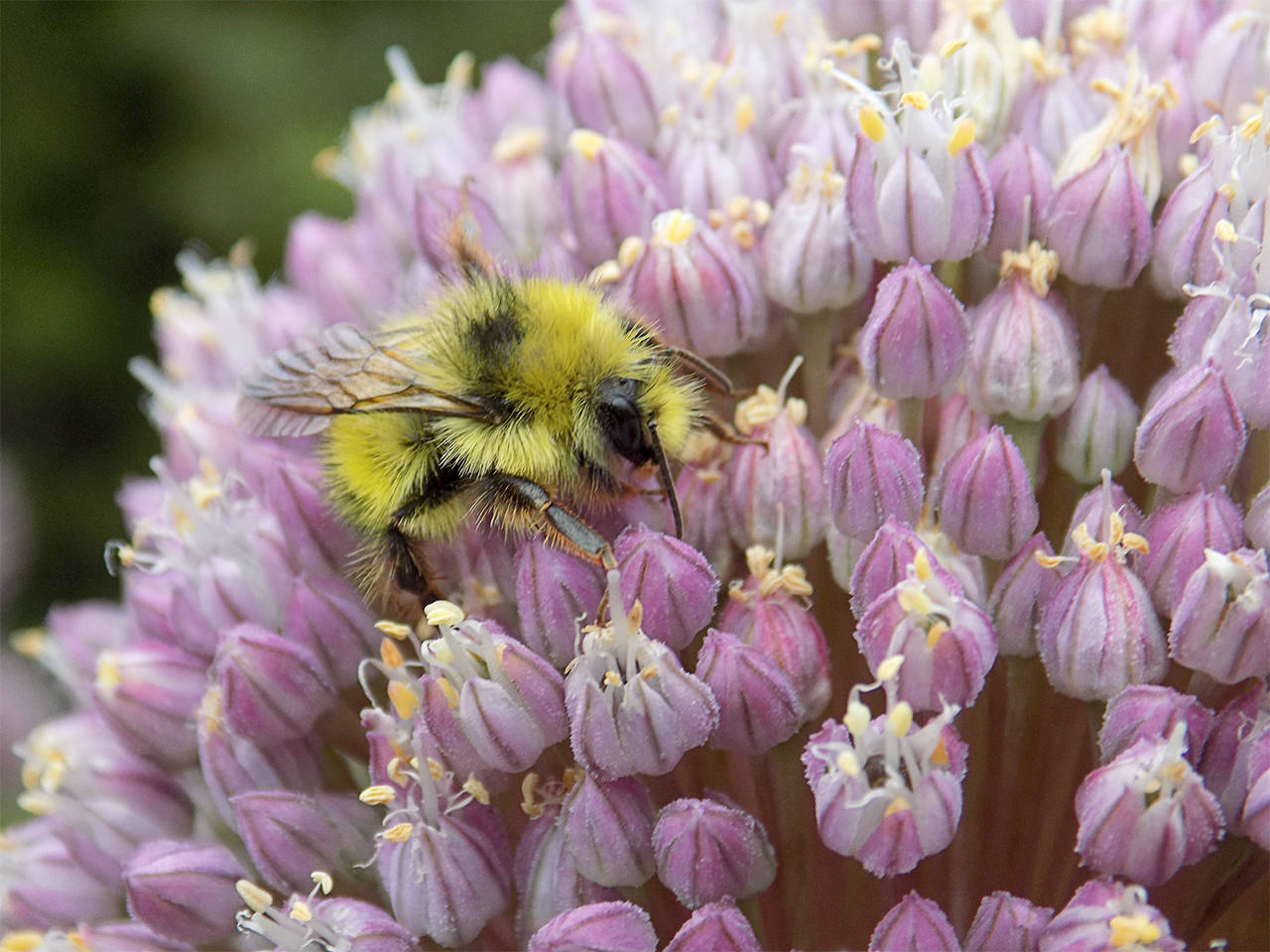Submitted by Russel Barsh
My lab has been documenting pollinators in San Juan County for six years, devoting hundreds of hours to watching, counting and photographing “flower visitors” in gardens, orchards, and the wildflower meadows on public lands.
Thus far we have identified more than 100 native species of bees and hoverflies (“flower flies”) in the islands. On public lands and relatively developed areas such as Eastsound, we have observed that most pollination is done by wild insects rather than by honeybees. The San Juan Islands are fortunate to retain a diverse native pollinator community. In more extensively agricultural parts of Washington, plowing and pesticides have reduced native pollinators to the point that growers must buy, raise or rent their pollinators — chiefly honeybees.
Honeybees (Apis mellifera) are a domestic animal of Eurasian and African origins, like cattle and sheep. They do not ordinarily live wild; swarms that set off on their own are regarded as serious problems, like runaway cattle or pigs. Like livestock, honey bees must be housed and fed by their human hosts. In the winter they must be kept warm. They are neither native to nor sustainable in the San Juans. Wild bees and hoverflies are sustainable; they build their own nests and do not require feeding all winter.
If you plan to make honey for home consumption or for sale, then your decision is no different than deciding to fill your yard with chickens for eggs or your fields with sheep for lamb or wool. You are undertaking a responsibility to take good care of your livestock, and not let its behavior harass or injure neighbors’ property. But the majority of new beekeepers I have met are not making honey. They believe that raising honey bees is good for the environment. This is misinformed, and if it continues, will displace and diminish our existing island pollinator networks.
At a garden site on Lopez where for six years I have seen dozens of wild native bee and hoverfly species, honey bees were rare until last spring when hives were established nearby. After large numbers of honeybees began patrolling the garden daily, nearly all of the wild pollinators vanished, presumably seeking pollen and nectar elsewhere. Because they forage in large groups and must support large hives, honeybees assertively compete with wild bees and flies for flowers. This does not make honey bees any better as pollinators, but it can result in a loss of pollinator diversity and resilience, and make gardeners and farmers dependent on beekeepers.
Some environmentalists are advocating honey bee-keeping as a way of “helping the pollinators.” This is not scientifically sound. Inadequately managed honey bee hives displace wild native pollinators – and then often die from winter starvation or mites. The result is fewer pollinators.
Islanders that are seriously concerned about pollinators can begin by reducing their outdoor use of pesticides — all pesticides kill pollinators, not only the neonicotinoids, especially if sprayed within 100 feet of flowers. Islanders can also leave some shrubby patches or hedgerows undisturbed. That’s where wild bees and hoverflies will leave their eggs. Leave our wild pollinators a home, and don’t poison them: this is the formula for sustainable pollinator services, and not importing non-native bees. And visit my website for photos and life history notes on many of San Juan County’s wild native bees and hoverflies! Just Google the term “sjipollinators.”
Russel Barsh is the director of Kwiaht, a Lopez-based conservation biology laboratory, and runs its Pollinator-Friendly Isles program.



